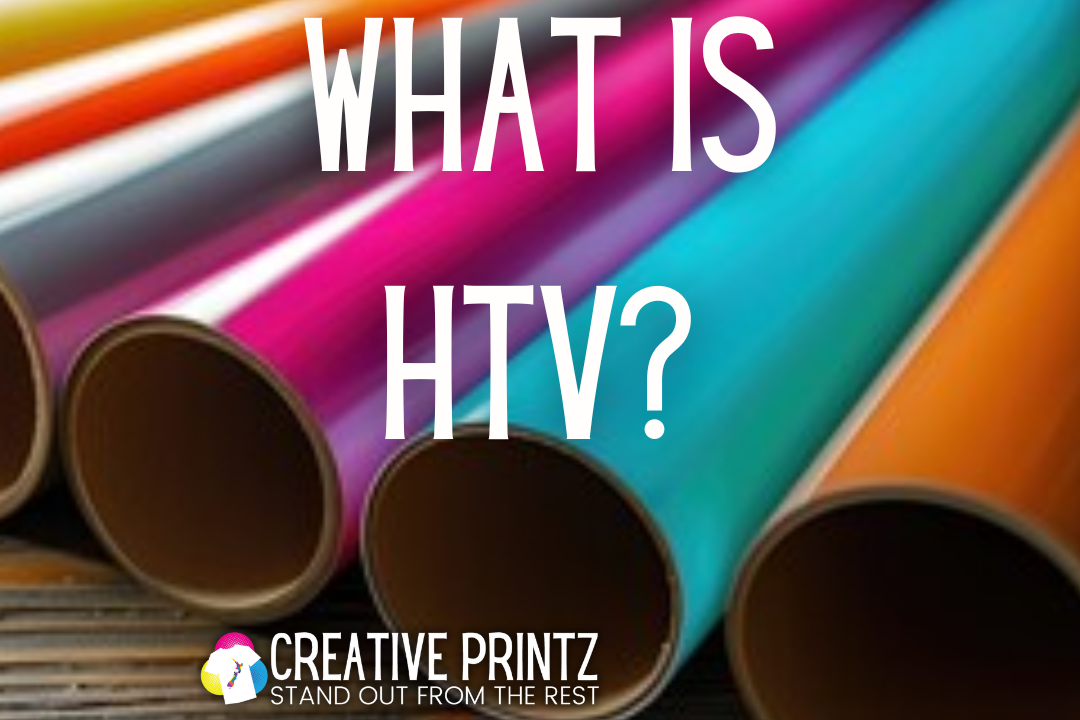
What is Heat Transfer Vinyl (HTV)? A Comprehensive Guide by Creative Printz
Share
Welcome to Creative Printz! Today, we’re diving into the world of Heat Transfer Vinyl (HTV), a versatile and popular material used for creating custom designs on fabrics. Whether you’re a seasoned crafter or just starting out, understanding HTV can open up a world of creative possibilities. Let’s explore what HTV is, how it works, and why it’s a favorite among DIY enthusiasts and professionals alike.
What is Heat Transfer Vinyl (HTV)?
Heat Transfer Vinyl (HTV) is a specialty vinyl material that can be used to create custom designs on various fabrics and surfaces. Unlike regular adhesive vinyl, HTV has a heat-activated adhesive backing, allowing it to bond with the fabric when heat and pressure are applied. This makes it perfect for personalizing clothing, accessories, and home décor items.
Types of HTV
HTV comes in a variety of types, each suited for different applications and effects:
-
Standard HTV: This is the most common type, available in a wide range of colors and finishes. It’s perfect for basic designs and everyday use.
-
Glitter HTV: As the name suggests, this type adds a glittery effect to your designs, making them sparkle and stand out.
-
Metallic HTV: Ideal for creating a shiny, reflective look, metallic HTV gives your designs a high-impact visual appeal.
-
Flock HTV: This type has a fuzzy, velvety texture, adding a unique touch to your creations.
-
Holographic HTV: For a futuristic, multi-dimensional look, holographic HTV changes color and pattern based on the angle of light.
-
Patterned HTV: These pre-printed designs come in various patterns, from animal prints to geometric shapes, providing endless creative options.
How to Use HTV
Using HTV is straightforward, but it requires attention to detail to achieve the best results. Here’s a step-by-step guide:
-
Design and Cut: Create your design using design software compatible with your cutting machine. Remember to mirror your design before cutting, as HTV is applied face-down.
-
Weed: After cutting, remove the excess vinyl from your design using a weeding tool. This process reveals your final design.
-
Position: Place your weeded design on the fabric, with the shiny side (carrier sheet) facing up.
-
Apply Heat: Use a heat press or an iron to apply heat and pressure to the design. Follow the specific temperature and time guidelines provided by the HTV manufacturer.
-
Peel: Once the vinyl has adhered to the fabric, peel off the carrier sheet. Some HTV requires a warm peel, while others need a cold peel. Refer to the instructions for the best results.
Why Choose HTV?
HTV offers several advantages that make it a go-to choice for custom apparel and décor projects:
-
Durability: HTV is known for its long-lasting quality. Designs made with HTV can withstand regular washing and wear without fading or peeling.
-
Versatility: With a wide range of colors, textures, and finishes, HTV allows for limitless creative possibilities. You can mix and match different types to create unique designs.
-
Ease of Use: Even beginners can achieve professional-looking results with HTV. The process is straightforward, and with a little practice, anyone can master it.
-
Cost-Effective: HTV is an affordable option for creating custom apparel and items. It’s perfect for small businesses, craft enthusiasts, and anyone looking to personalize their belongings.
Conclusion
Heat Transfer Vinyl (HTV) is an incredibly versatile and user-friendly material that can transform ordinary fabrics into personalized masterpieces. Whether you’re crafting for fun, making gifts, or starting a small business, HTV offers endless opportunities to express your creativity.
At Creative Printz, we’re passionate about helping you bring your ideas to life.
